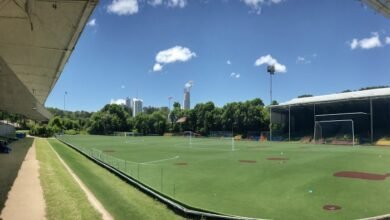Exploring Paco Turf in Burkina Faso: Everything You Need to Know

Introduction
In Burkina Faso, Paco Turf is gaining popularity as a sustainable landscaping solution. This blog post explores the origins, benefits, and practical applications of Paco Turf across various environments.
What is Paco Turf?
Paco Turf refers to a specific type of grass developed for its resilience and adaptability in varying climates. Originating from innovative agricultural practices in Burkina Faso, it has garnered attention for its ecological benefits and practical applications.
Origins and Development in Burkina Faso
The development of Paco Turf stems from local agricultural research aimed at creating a sustainable alternative to traditional grasses. Researchers in Burkina Faso recognized the need for a drought-resistant and low-maintenance option suitable for the region’s semi-arid climate.
Benefits of Paco Turf
Paco Turf offers several advantages over conventional grasses. It requires less water, fertilizer, and mowing, making it a cost-effective and environmentally friendly choice. Its deep root system also enhances soil stability and erosion control.
Environmental Impact
In a region prone to desertification, Paco Turf plays a crucial role in preserving soil quality and preventing erosion. Its ability to thrive in harsh conditions reduces the ecological footprint associated with traditional turf maintenance.
Applications in Landscaping
From residential lawns to public parks and sports fields, Paco Turf is versatile in its applications. Its lush green appearance and durability make it an appealing option for landscape architects and homeowners alike.
Where to Find Paco Turf in Burkina Faso
Local nurseries and agricultural suppliers in Burkina Faso are increasingly stocking Paco Turf due to growing demand. Additionally, partnerships with international distributors ensure accessibility beyond national borders.
Installation and Maintenance
Installing Paco Turf follows standard procedures similar to traditional sod. Proper preparation of the soil and regular watering during establishment are crucial. Once established, Paco Turf requires minimal upkeep compared to other grass varieties.
Cost Considerations
While initial costs may be slightly higher than traditional turf, the long-term savings on water and maintenance expenses make Paco Turf a cost-effective investment. Its durability and resilience contribute to lower overall landscaping costs over time.
Comparisons with Traditional Turf
Compared to traditional turf species, Paco Turf excels in arid and semi-arid climates where water scarcity and extreme temperatures pose challenges. Its ability to maintain aesthetic appeal with minimal resources sets it apart in sustainability.
Future Trends and Innovations
The future of Paco Turf lies in ongoing research and development to enhance its adaptability and performance in diverse environments. Innovations in seed technology and cultivation methods continue to expand its global reach.
Dive into the exciting world of ToonGod Manga, your go-to destination for high-quality manga content! Whether you’re a fan of action-packed shonen, heartwarming shojo, or thrilling seinen, ToonGod Manga offers endless entertainment with the latest chapters and classic favorites. Enjoy crisp artwork, fast updates, and a user-friendly reading experience—all for free! Join millions of manga lovers and explore new stories daily. ToonGod Manga brings your favorite characters to life with just a click. Start your manga journey today and never miss a chapter!
Conclusion
Paco Turf represents a sustainable solution for landscaping in Burkina Faso and beyond. Its ecological benefits, cost-effectiveness, and resilience make it a preferred choice for environmentally conscious consumers and landscaping professionals alike.
FAQs
1.Is Paco Turf suitable for all climates?
Paco Turf thrives in semi-arid to arid climates but can be adapted with proper care in various environments.
2.How does Paco Turf compare to artificial turf?
Unlike artificial turf, Paco Turf is natural and promotes biodiversity while requiring less maintenance.
3.Can Paco Turf be used for sports fields?
Yes, Paco Turf is suitable for sports fields due to its durability and ability to withstand heavy use.
4.What are the installation costs of Paco Turf?
Installation costs vary but are generally offset by long-term savings on water and maintenance.
5.Where can I buy Paco Turf seeds or sod in Burkina Faso?
Local nurseries and agricultural suppliers in Burkina Faso typically offer Paco Turf seeds and sod.





